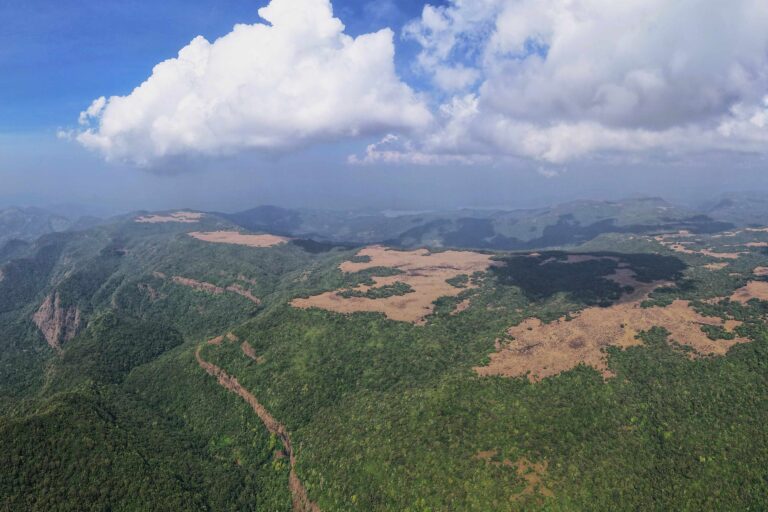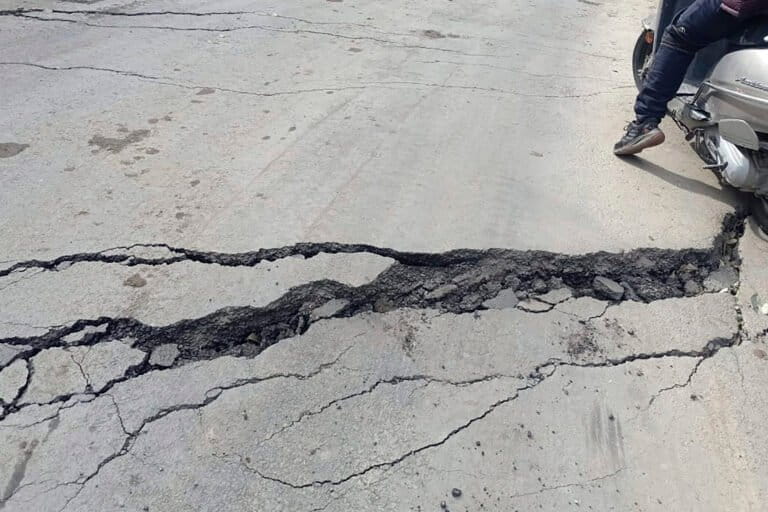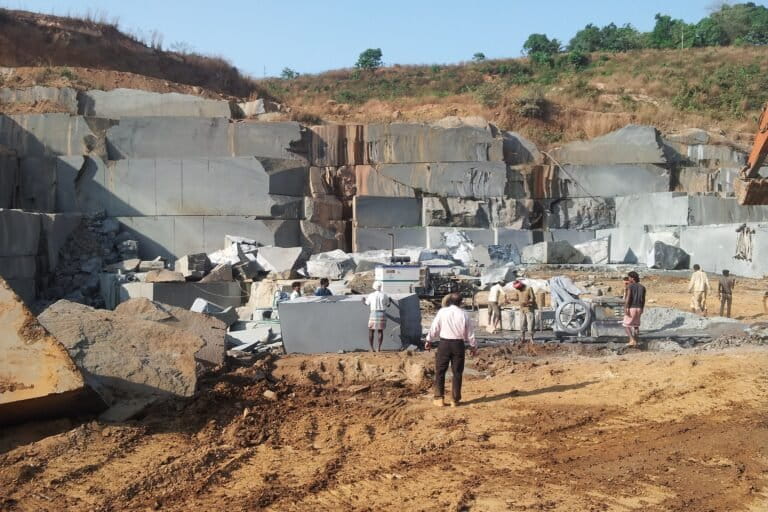- Northeast India’s tea gardens have the scope to adopt renewable energy systems which will be beneficial both for the tea estates and the environment.
- Solar is a popular clean energy option in tea estates in Assam. Renewable energy helps the energy-intensive estates cut costs and reduce greenhouse gas emissions.
- Agrivoltaics, a method to combine agriculture and solar photovoltaics in the same plot of land, is also being considered for tea gardens.
- Tea garden managers will have to factor in wildlife movement spaces to sustainably integrate solar installations in such tea estates, note experts.
Renewable energy has become a popular option for meeting energy needs, across different sectors of the economy. Buoyed by India’s intent to achieve 500 GW renewable energy capacity by 2030, tea estates in northeast India are experimenting with solar power to cut costs and maintain production, amid challenges with the delivery of fossil fuel-based grid electricity.
A recent feasibility study on the scope of adoption of renewable energy in tea estates of northeast India, a major tea-growing region of the country, reveals a significant opportunity for adopting renewable energy systems that will be beneficial both for the tea estates and the environment. The study collected data on eight tea gardens (four from Assam and four from the northern area of West Bengal) and seven tea processing industries. All the tea gardens in the survey agreed that the installation of large solar panels within the garden would not impact the growth of tea plants.
The study also revealed that tea estates preferred to adopt solar among the alternative energy sources. This is because installing a hydropower station costs higher and solar panels are easy to install with a one-time initial investment.
At least one acre of unused/barren land is required for installing solar photovoltaic panels in the tea estates. The feasibility study found that most of the tea gardens (87.5%) have barren or unused land. A few (12.5%) said that they do not have any such land, the survey revealed.
“Tea processing has many steps, and few steps need more energy than few others. We are conducting another survey on the same with a bigger sample size than the previous one and thinking of drawing a better conclusion than before. We are planning for a system with the help of IIT-Delhi to use solar energy for these processes,” co-author of the feasibility survey Kaustav Aditya, a scientist with ICAR-Indian Agricultural Statistics Research Institute (IASRI), told Mongabay-India.
Energy intensive tea industry
From plucking tea leaves to packaging, tea production goes through a series of steps, many of which are energy-intensive. India ranks second, after China, in tea production globally and tea gardens mainly use fossil/petroleum-based fuel energy.
India produces around 580 million tonnes of tea every year and an average of 2.64 kg of CO2 is generated per kg of tea.
P.K. Bhattacharjee, secretary-general of the Tea Association of India, said, electricity is required for tea plantation and production. In plantations, electricity is needed for several agricultural practices, mainly irrigation, mechanised pruning, tractor-mounted spraying, power spraying, and plucking. In tea production, electricity is necessary to operate machines. Thermal energy (heat) aids moisture removal from the tea leaves during withering and drying.
“Most factories use state grid supply to fulfill the need for electricity; diesel generators are used during blackouts and power cuts. These conventional fuels may be replaced by suitable renewable energy resources to meet the energy demand in tea plantations and industries,” Bhattacharjee told Mongabay-India.
Ranjit Barthakur of FICCI Northeast Advisory Council told Mongabay-India that the tea industry in Assam is facing severe difficulties in managing the cost of inputs, including that of power, resulting in high cost of produced tea. “These ambitious energy targets and the incentives for solar installation are an opportunity for the industry to begin a careful, planned transition away from fossil fuels,” Barthakur said.
For example, Barthakur says, the industry should explore installing solar panels on the roofs of workers’ houses to create self-sustaining circular generation systems within tea gardens.
He added, the key is to close the gaps in distribution and transmission. “If workers can benefit from generating solar power for gardens and if this power can be distributed with minimal loss, we will be able to make this industry more self-sustaining,” Barthakur said.
According to another assessment of renewable potential in northeast India, the region has surplus renewable energy which can be transmitted to other states in need. The total opportunity is 66,682 MW, out of which only 0.49% has been tapped so far. Among the states, Assam has the highest reserve of 14,361 MW followed by Arunachal Pradesh (10,960 MW) and Manipur (10,803 MW). Resource-wise, solar has the highest capacity of 62,300 MW, out of which only 0.0086% has been used. Wind (600 MW) and biomass (520 MW) are yet to tapped.
Renewable for reliability, reducing costs and emissions
Many tea estate gardens in Assam have set up solar installations to reduce costs, maintain a reliable electricity supply, and reduce carbon dioxide (CO2) emissions.
Sunil Mohta of Kalinagar tea estate in southern Assam is satisfied after investing Rs. 40 lakhs (Rs. 4 million) in a 100 kilowatts peak (kWp) solar plant. “By investing around Rs. 40 lakhs, we have saved around Rs. four lakhs (Rs. 400,000) directly from the generation of electricity and another amount of around Rs. four lakhs on less diesel consumed on gensets (diesel generator),” Mohta told Mongabay-India.
Mohta says the basic idea behind installing a solar power plant was to reduce costs, especially when the electricity from the grid is unavailable. It reduces the diesel consumption of generators by 30 -40% and reduces carbon emission in the process.
Ishwarlal B. Ubhadia of Rosekandy tea estate, also in southern Assam, said he doesn’t need to worry about the erratic power supply from the grid and about the CO2 emissions which are emitted from the factory. “Tea gardens in Assam face erratic power supply from the grid. The state-run power sector utility supplies only 60% of the total electricity requirement. For the remaining 40 percent, tea estates have to rely on high-speed diesel generator sets,” he says.
“The only way the industry can reduce costs in its operations is by reducing costs on power. Wages and salaries and other benefits can’t be curtailed,” Ubhadia said.
Rosekandy tea estate has recently installed interactive grid rooftop photovoltaic (P.V.) technology to produce clean, emission-free electricity.
Former Chairman of Indian Tea Association Vivek Goenka said, at the 138th association’s annual general meeting held virtually, that the acceptance of solar power today and its popularity as a clean energy generator will invariably be the source of power for the future. “Several estates in Barak Valley and Dooars have already begun this transition, and it is important for the rest of the industry to follow suit,” he said.
Roofsol Energy, a private solar power provider, is executing many solar projects in tea estates in Assam and Bengal, and there are plans for more too. “We strongly recommend solar energy to tea gardens because it is a strong tool for saving various power costs. This will benefit all including the gardens which are not sound financially,” Dipankar Paul, managing director of Roofsol Energy Pvt. Limited told Mongabay-India.
He said, for a garden that produces 10 lakh (1 million) kilograms of tea, the average size of a solar plant that will fit in is 500 kWp. The cost of such a project will be Rs. two crores (Rs. 20 million). Typically for a 500 kWp project, the amount of electricity generated will be seven lakh (700,000) units in a year and 20-25% of ongoing diesel savings. “Given the fact that the total life of the plant is 25 years, this will be a very strong proposition for all tea garden owners to invest in such a solar plant,” he said, adding that there are plans of covering 100 tea gardens with solar in the next two years.

Use of agrivoltaics in tea gardens
Debajit Palit, director and senior fellow, Rural Energy and Livelihoods Division at The Energy and Resources Institute (TERI), says that agrivoltaics can be tried in tea gardens. Agrivoltaics is a method to combine agriculture and solar P.V. for dual land use.
“While the fallow/unsued land in the tea gardens can be used to set up solar power systems for electricity generation, it would be interesting to adopt agrivoltaics method for simultaneous use of the land for solar energy generation and tea plantation, given the short height of tea plants. Transparent dual glass modules could replace the shade trees in the tea gardens. The glass modules are expected not to affect the growth of the tea plantations but will enable efficient use of the space, significantly improving the use of land and solar energy and fostering the symbiosis between tea plantations and solar,” he said.
In new tea plantations, solar energy could provide necessary revenue to the planters as it will begin generating energy immediately on installation, between the plants maturing and yielding tea (i.e., the initial 2-3 years). Initially, all the power, and after that, any excess energy can be exported to the grid thereby increasing the revenue for tea gardens, Palit said.
The movement of wildlife being impacted by the solar installations would depend on where the solar PV systems are used in tea estates, says conservation scientist Varun Goswami.
“In landscapes where wildlife use tea estates to move between habitats, such as in Golaghat and Nagaon districts of Assam, our research suggests that remnant woodlands in tea estates provide important refuges for wildlife movement. The conversion of these woodlands, currently considered as ‘unused lands’, to solar PV systems, would thus be detrimental to wildlife movement. In such landscapes, it would be important and worthwhile to consider alternative locations for solar panels within the estate, such as the roof of the factory and other built-up spaces. The withering area in tea processing factories, for example, can be over 40,000 sq. ft. and can thus provide considerable space for solar panels,” Goswami, senior scientist and director at Conservation Initiatives told Mongabay-India.
Banner image: Solar PVs at the Rosekandy tea estate. Photo by Roofsol Energy.














